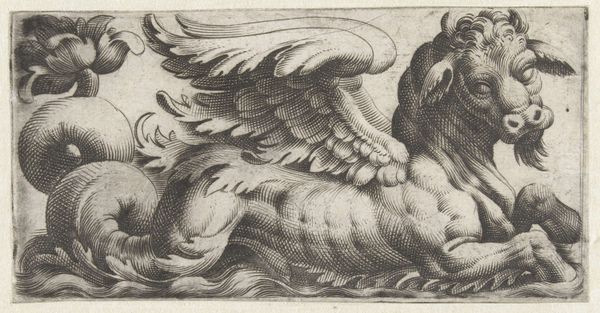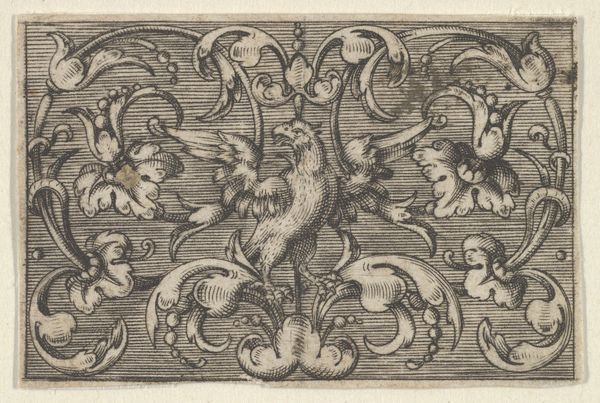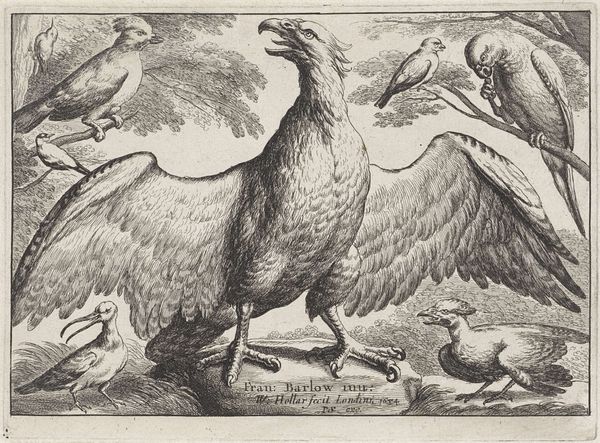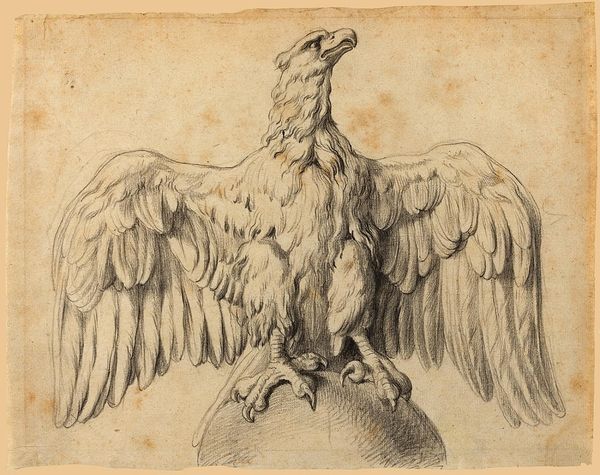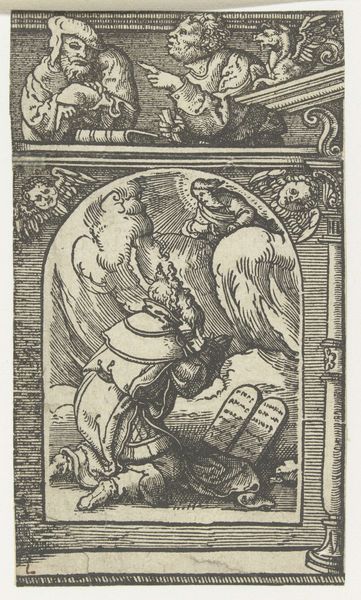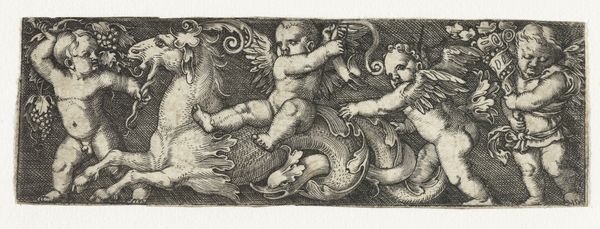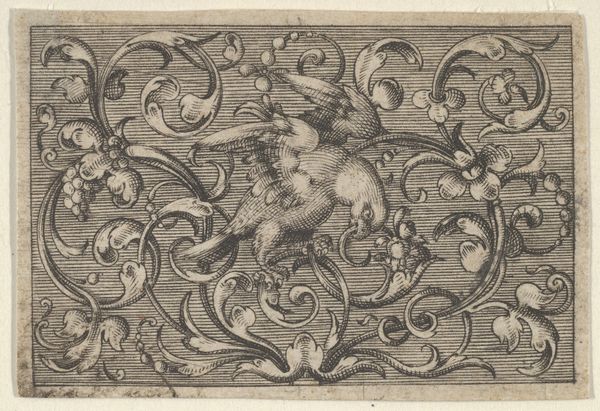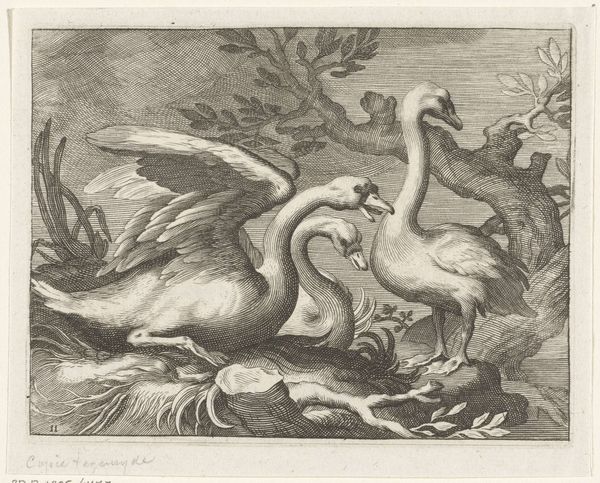
Horizontal Panel with an Eagle Flanked by Two Genii 1544
0:00
0:00
Dimensions: Sheet: 7/8 x 2 1/16 in. (2.2 x 5.2 cm)
Copyright: Public Domain
Editor: This is “Horizontal Panel with an Eagle Flanked by Two Genii,” a print made in 1544 by Sebald Beham. It's incredible how much detail he fit into such a small space using engraving. What strikes me most is the rather intense gaze of that central eagle. How do you interpret this work? Curator: It's tempting to see this seemingly ornamental panel through the lens of its historical context, the Reformation in Germany, which heavily influenced Beham's life and work. Considering this upheaval, what does it mean to depict such classical, even pagan imagery in this era? Editor: That's interesting! I hadn’t considered the religious aspect. Are you saying the eagle and genii could be more than just decorative? Curator: Absolutely. The eagle, a symbol of power and empire, is flanked by these cherubic figures, genii, representing, perhaps, different aspects of the human spirit. Beham was critical of established power. Consider whether this is a commentary on worldly versus spiritual authority. Does it uphold or subvert existing social hierarchies? Editor: So, it's not just a pretty design; it could be a statement about the tensions between religious belief and secular power. Curator: Precisely. The panel's very existence, its accessibility as a print, invites broader questions about the role of art in disseminating potentially subversive ideas during times of religious and social change. It begs us to ask, "who held the power, who made the artwork, and what did that artwork signify to society?" Editor: That gives me a lot to think about! I always looked at Renaissance art for its beauty and technical skill, but I never really questioned its social relevance in that way. Curator: Seeing art as entangled in its specific socio-political realities enriches our appreciation for not only the craft, but also the complex dialogues occurring in history. Hopefully that can inspire new interpretations.
Comments
No comments
Be the first to comment and join the conversation on the ultimate creative platform.
